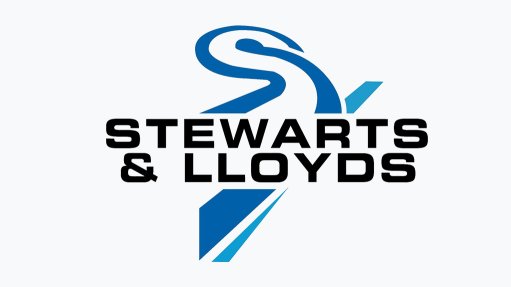DBSA committed to funding infrastructure projects throughout SADC
With low levels of electrification hindering economic growth and development in sub-Saharan Africa – where 78% of the population is reliant on biomass as their main energy source – $57-trillion will be required until 2030 to fund the continent’s infrastructure and energy projects, according to Development Bank of Southern Africa (DBSA) strategy group executive Mohan Vivekanandan.
“There has, however, been a lot of progress regarding energy in the region,” he said, addressing delegates on Tuesday at the Southern African Development Community (SADC) Industrialisation Week, in Johannesburg.
“The SADC region has moved from a deficit [of power capacity] to a surplus, with the latest figures from the Southern African Power Pool showing that there is 1 000 MW of excess capacity as a region,” he said.
The challenge now, he noted, was strengthening the interconnectivity of the transmission grid.
“The DBSA is working closely with SADC counterparts on the area’s infrastructure agenda. According to the SADC master plan, the region has to invest R33-billion a year to develop the energy and transport sectors,” he said.
Vivekanandan added that South Africa had brought a significant amount of energy onto the regional grid with megaprojects such as State-owned power utility Eskom’s Medupi, Kusile and Ingula power station projects.
“The DBSA has also invested a lot of capital into bringing renewable energy projects onto the grid,” he said, adding that the bank played a significant role in the establishment of the Renewable Energy Independent Power Producer Procurement Programme (REIPPPP).
He pointed out that, to date, the DBSA had committed funding to 21 projects involved in the REIPPPP, which essentially funded the generation of 2 550 MW.
Vivekanandan added that 18 of these projects are currently operational and delivering power to the grid, while three were under construction.
He noted that the DBSA had committed about R15.1-billion to rounds 1 and 3.5 of the REIPPPP, with R12.6-billion committed to senior debt and about R2.5-billion to black economic empowerment parties and local community trusts.
“The DBSA will continue to support broad-based black economic-empowerment entities and local community trusts with funding to acquire equity stakes in REIPPPP projects,” he said.
Vivekanandan further noted that, on top of funding various renewable energy programmes, the DBSA has been funding project preparation studies to strengthen transmission grids to interconnect regional power grids throughout the SADC region.
TRANSPORT
Looking at the SADC region’s transportation sector, Vivekanandan noted that, by 2030, traffic for landlocked SADC countries will increase from 50-million tons to 148-million tons by 2040 – an 8.2% yearly growth rate.
Port traffic will expand from 92-million tons to 500-million tons by 2027 and port expansion projects at Dar-es-Salaam, in Tanzania, will only sustain shipment traffic through 2020.
“OR Tambo International Airport in Johannesburg, South Africa, will add two-million passengers a year by 2030 and three-million a year by 2040, while Kenneth Kaunda International Airport in Lusaka, in Zambia and N’djili International Airport in Kinshasa, in the Democratic Republic of Congo, currently operate at 70% of capacity, but expect traffic to expand well over 100% of capacity by 2020,” he said.
Meanwhile, Vivekanandan noted that the DBSA was in the process of providing funding to preparation studies aimed at improving the North–South Corridor (NSC), which runs from Durban, South Africa, to Dar-es-Salaam.
“We are allocating $1-million for a preparation study to improve the rail linkage that will lead to about $700-million of capital expenditure over the next two years,” he said.
He stated that the signing of the NSC initiative by SADC Transport Ministers in July was a big step to ensuring the project moves forward.
“The NSC will be one of the largest transnational corridors and has massive regional importance. It will connect eight countries, 252-million people and generate $458-billion of collective gross domestic product,” he said.
Article Enquiry
Email Article
Save Article
Feedback
To advertise email advertising@creamermedia.co.za or click here
Comments
Press Office
Announcements
What's On
Subscribe to improve your user experience...
Option 1 (equivalent of R125 a month):
Receive a weekly copy of Creamer Media's Engineering News & Mining Weekly magazine
(print copy for those in South Africa and e-magazine for those outside of South Africa)
Receive daily email newsletters
Access to full search results
Access archive of magazine back copies
Access to Projects in Progress
Access to ONE Research Report of your choice in PDF format
Option 2 (equivalent of R375 a month):
All benefits from Option 1
PLUS
Access to Creamer Media's Research Channel Africa for ALL Research Reports, in PDF format, on various industrial and mining sectors
including Electricity; Water; Energy Transition; Hydrogen; Roads, Rail and Ports; Coal; Gold; Platinum; Battery Metals; etc.
Already a subscriber?
Forgotten your password?
Receive weekly copy of Creamer Media's Engineering News & Mining Weekly magazine (print copy for those in South Africa and e-magazine for those outside of South Africa)
➕
Recieve daily email newsletters
➕
Access to full search results
➕
Access archive of magazine back copies
➕
Access to Projects in Progress
➕
Access to ONE Research Report of your choice in PDF format
RESEARCH CHANNEL AFRICA
R4500 (equivalent of R375 a month)
SUBSCRIBEAll benefits from Option 1
➕
Access to Creamer Media's Research Channel Africa for ALL Research Reports on various industrial and mining sectors, in PDF format, including on:
Electricity
➕
Water
➕
Energy Transition
➕
Hydrogen
➕
Roads, Rail and Ports
➕
Coal
➕
Gold
➕
Platinum
➕
Battery Metals
➕
etc.
Receive all benefits from Option 1 or Option 2 delivered to numerous people at your company
➕
Multiple User names and Passwords for simultaneous log-ins
➕
Intranet integration access to all in your organisation


















